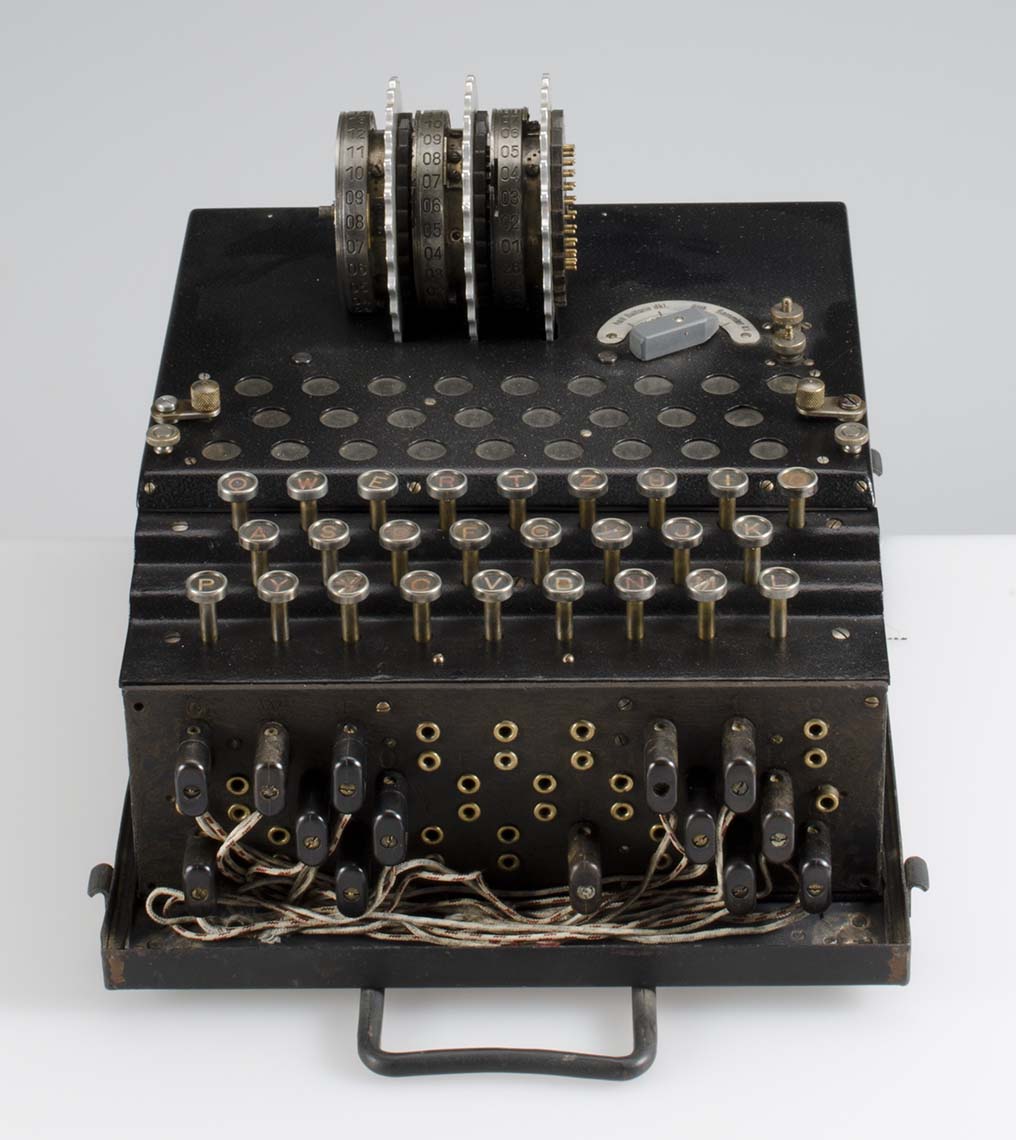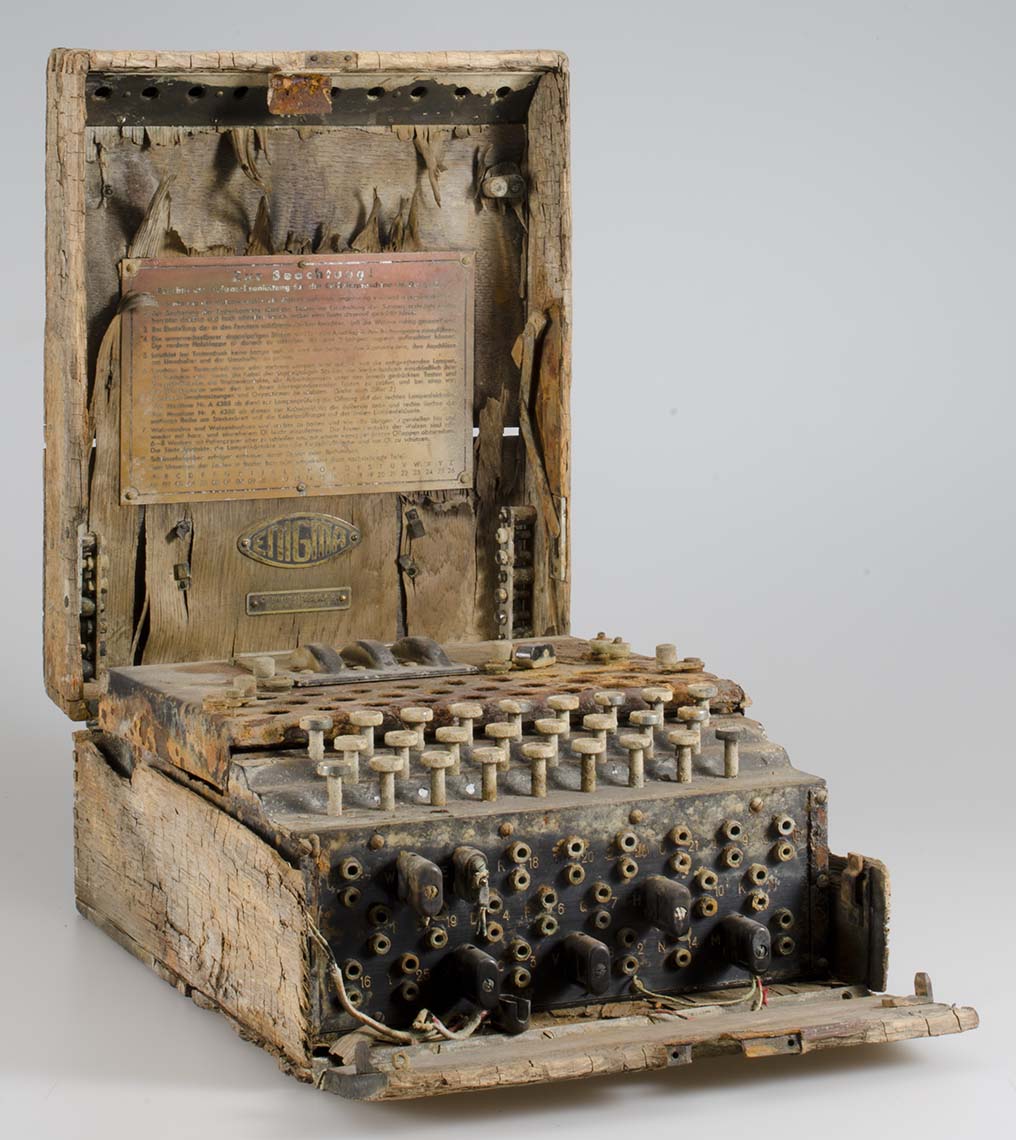9. Military cabinet
Now let’s move on to the first floor to the military cabinet on the left-hand side. Here you can see the various army typewriters, field telephones and coding devices from the Second World War. In the centre there are 2 machines which influenced the war with tragic consequences. These are 2 examples of the Enigma coding machine, which was used by the German army to encrypt secret radio messages. Although it looks like a typewriter from the outside, this machine could not be used to write with but to convert text and letters into codes. When pressing a key to be coded, the corresponding code letter lit up in the lamp board behind the keyboard. The text was coded by several adjustable rotors and connections. For every text to be encoded, the position of the rotors was changed to produce a scrambling quota of a million billion. Despite this apparent security, the Enigma code was cracked!


As early as the early 30s, 3 gifted Polish maths students managed to break the Enigma code. Shortly before war broke out, Rejewski, Rozycki and Zygalski felt obliged to let the English and French in on their secret. Immediately after war broke out, the 3 crypto-analysts fled to France to continue their work there. One of the most expensive and significant espionage operations of all time, with the aim of deciphering the Enigma code, was started near London in 1939. In Bletchley Park, an old Victorian residence in Buckinghamshire located between the cities of Oxford and Cambridge, hundreds, and by the end of the war, over 9,000 people worked under the strictest secrecy to decipher the secret radio messages of the Enigma. The most brilliant mathematicians in England, the British chess champion, etc. - these were just some of the academics from Cambridge and Oxford who were recruited for the work in Bletchley. Alan Turing was definitely one of the most dazzling of the many eccentric characters at Bletchley Park, who competed against time to disclose the secret of the Enigma.
It was possible with the help of electric machines to test all the scrambling options in a short time. The Bombe, as these machines were called, were first used by the Poles and were later improved by Turing. Turing had already described the theoretical functions of a computer in his degree dissertation in the 1930s. These were partially realised later on in Colossus, a programmable computer which was built specifically to decipher the Lorenz coding machine, used by Hitler himself. However, the brilliant mathematician scarcely received any recognition for his work during his lifetime. In 1952 he was condemned for being homosexual and committed suicide 2 years later. The workers at Bletchley Park had to wait a long time for public recognition. They were strictly forbidden to talk about their work during the war years. The secret was not disclosed until the 70s with the publication of “The Ultra Secret” by F.W.Winterbotham. It was another 10 years before the archive at the British Secret Service was opened. In the meantime, the topic of the Enigma and Bletchley Park – which is now a museum – has, through numerous publications and films, never been talked about as much as it is today. Some historians are still of the opinion that deciphering the Enigma had a much greater influence on the war than was realised for a long time. The Second World War was supposedly shortened by at least 2 years as a result.
9. Military cabinet

Pilot intervention in South Tyrol co-financed by the Cassa di Risparmio di Bolzano Foundation





